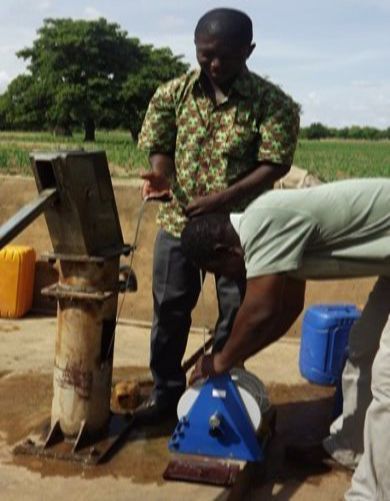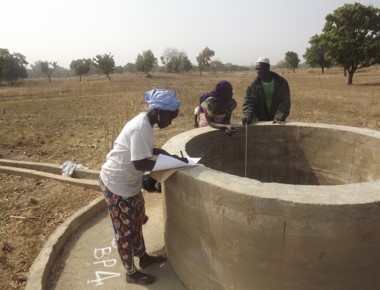Case Study Community Monitoring Burkina Faso
Africa Groundwater Atlas >> Additional resources >> Case studies >> Community groundwater monitoring in Burkina Faso
This page is being developed. Please check back soon for more content.
Community groundwater monitoring in Burkina Faso
What is Community-Based Water Resource Management (CBWRM)?
Community-based water resource management is an approach that promotes appropriate water management strategies by and for communities. Typically using structures developed for WASH (water, sanitation and hygiene) management, it brings WASH and water resource management practices closer together, in an integrated approach to managing water resources and supplies.
The project
The NGOs WaterAid and Oxfam GB adopted this approach in West Africa, in a project spanning six countries: Burkina Faso, Chad, Ghana, Mali, Niger and Nigeria. The project aimed to improve the management community water supply services in highly variable climates, through better groundwater monitoring, management and retention, and rainfall re-use (WaterAid 2013).
Measuring groundwater levels
In Burkina Faso, the project focused on three villages where WaterAid has been working since 2006. The project worked with water user committees and community volunteers, and a local NGO partner (DAKUPA), training members of each in groundwater monitoring. It also worked with the National Meteorological Authority, which installed nationally-approved rain gauges in each village and provided forms to record rainfall data in line with national standards.
Groundwater monitoring was done in two ways:
- - Trained community volunteers manually measured water levels in boreholes and hand-dug wells using a water level dip meter, usually once a week; and
- - Electronic water level loggers were installed in boreholes to automatically log water level every two hours. This is done by staff from the regional office of the Ministry of Agriculture and Water, in partnership with the community.
Most boreholes equipped with hand-pumps do not allow access for groundwater level monitoring, and so they first had to be modified to allow water level loggers to be installed and dip meters to be used (see photos).


